Author Archives:Lydia Sampson
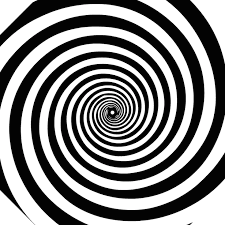
18
OctYou Are NOT Getting Sleepy…
 I am a librarian, and like many in my profession I am innately curious. If you are in the business of ferreting out information, being naturally curious comes in handy. When I’m not at the library putting my curiosity to work for others, I like to learn about learning and behavior – or why we do what we do, and how we can do things better. As such, I am an avid watcher of TED talks, those treasure troves of “ideas worth spreading,” and the related TEDx events organized in communities around the globe.
I am a librarian, and like many in my profession I am innately curious. If you are in the business of ferreting out information, being naturally curious comes in handy. When I’m not at the library putting my curiosity to work for others, I like to learn about learning and behavior – or why we do what we do, and how we can do things better. As such, I am an avid watcher of TED talks, those treasure troves of “ideas worth spreading,” and the related TEDx events organized in communities around the globe.
This summer I viewed one such talk delivered by Kristin Rivas called “The life-changing power of words.” Several years after her sister died in a car accident, she suddenly developed pseudo-seizures and other disturbing symptoms. She was eventually diagnosed by the Mayo Clinic with post-traumatic stress disorder, major depressive disorder and conversion disorder. Her doctors believed she was suffering from traumatic grief, which her body was converting into psychosomatic symptoms. They recommended drugs and intensive psychiatric care, but weren’t optimistic about the prognosis. The Mayo Clinic also recommended one last alternative: hypnotherapy. Desperate, she made an appointment with a specialist in trauma resolution therapy. During one two-hour session she learned that her mind was confusing memory with reality, and sending signals to address a perceived situation. She was then offered a different way of perceiving her sister’s death. The impact of the session was immediate and lasting; she was well. Inspired by her story, I viewed several other TEDx talks on hypnosis. I also recommend Danna Pycher’s talk, “Healing illness with the subconscious mind.”
Shortly after my TEDx marathon, I learned the library would be hosting a four-part series on “Hypnosis and Healing” to explore using the power of the mind to promote motivation, success and well-being. Curious (as ever), I signed up. In our first session, we were given an overview of hypnosis, which is simply a heightened state of concentration in which people are more receptive to suggestion. The person being treated is guided, using imagery and repetition, into a relaxed state, but is still aware. In fact, people go into hypnotic states on their own throughout the day, such as when we are driving somewhere and somehow end up at our destination without recollecting how we got there. This makes the term hypnosis – from “hypnos,” the Greek word for sleep – one of the bigger misnomers out there. Unfortunately for me, a combination of the dark room, soothing voice and sleep deprivation caused me to sleep through two of the four sessions. I listened wistfully to the stories of my fellow workshop attendees as they reported feeling more motivated and energetic. I was so disappointed to have squandered my chance to experience the benefits of hypnosis that I ratted myself out during the question-and-answer period one night to ask our presenter if she had any tips for not falling asleep. She noted that if we had been in an individual session, she would have done something like alter the volume of her voice if she’d noticed me slipping off, but that working in a group didn’t allow for that.
After one of the sessions in which I was snoozing while others made positive transformations, I decided to see what the library had to offer on the subject of hypnosis. I picked up an informative read called The Inner Source: Exploring Hypnosis with Dr. Herbert Spiegel by Donald Connery, which examines the practice of hypnosis and the career of one of its chief proponents. Dr. Spiegel was a newly minted psychiatrist who had learned hypnosis during his residency when he was sent overseas to serve as a battalion surgeon. The power of hypnosis was revealed to him through his work with soldiers grappling with combat stress. After leaving the service, Dr. Spiegel continued to explore hypnosis in private practice, and went on to teach a course in clinical hypnosis at Columbia University for over twenty years. In Dr. Spiegel’s opinion, all hypnosis is self-hypnosis; a hypnotist merely guides people to tap a natural ability to alter their perception and influence their reactions. He recognized that some people are more suggestible than others, and used different strategies to compensate for this.
Hypnosis has been used for everything from behavior modification (quitting smoking, losing weight, and releasing phobias) to coping with post-traumatic stress disorder and pain management on par with anesthesia. So my main wonderment is this: if hypnosis is so useful, why is it viewed as a last resort? If a quick, easy and side-effect-free method to improve our heath is available, why not add it to the mix? I suspect that the checkered past of the practice, from stage hypnotists to unscrupulous charlatans, prevents people from taking it seriously, but the cynical side of me also wonders if our healthcare system isn’t to blame. There is, after all, no money to be made from people who can make themselves well.
My own research into hypnosis continues. There are numerous resources out there for those who’d like to learn more. Our network owns The Complete Idiot’s Guide to Hypnosis, which offers an overview of the subject as well several appendices of additional resources. Self-Hypnosis for Dummies is similar, and available as an eBook. Other audio and digital resources abound for help with specific concerns such as insomnia, weight-loss, etc. For those who wish to consult a professional, a searchable database of licensed healthcare workers providing hypnotherapy is available through the American Society of Clinical Hypnosis at https://www.asch.net/.
Kirstie David is a Literacy and Outreach Librarian at the Morrill Memorial Library in Norwood, MA. Look for her article in the October 18, 2018 edition of the Norwood Transcript.
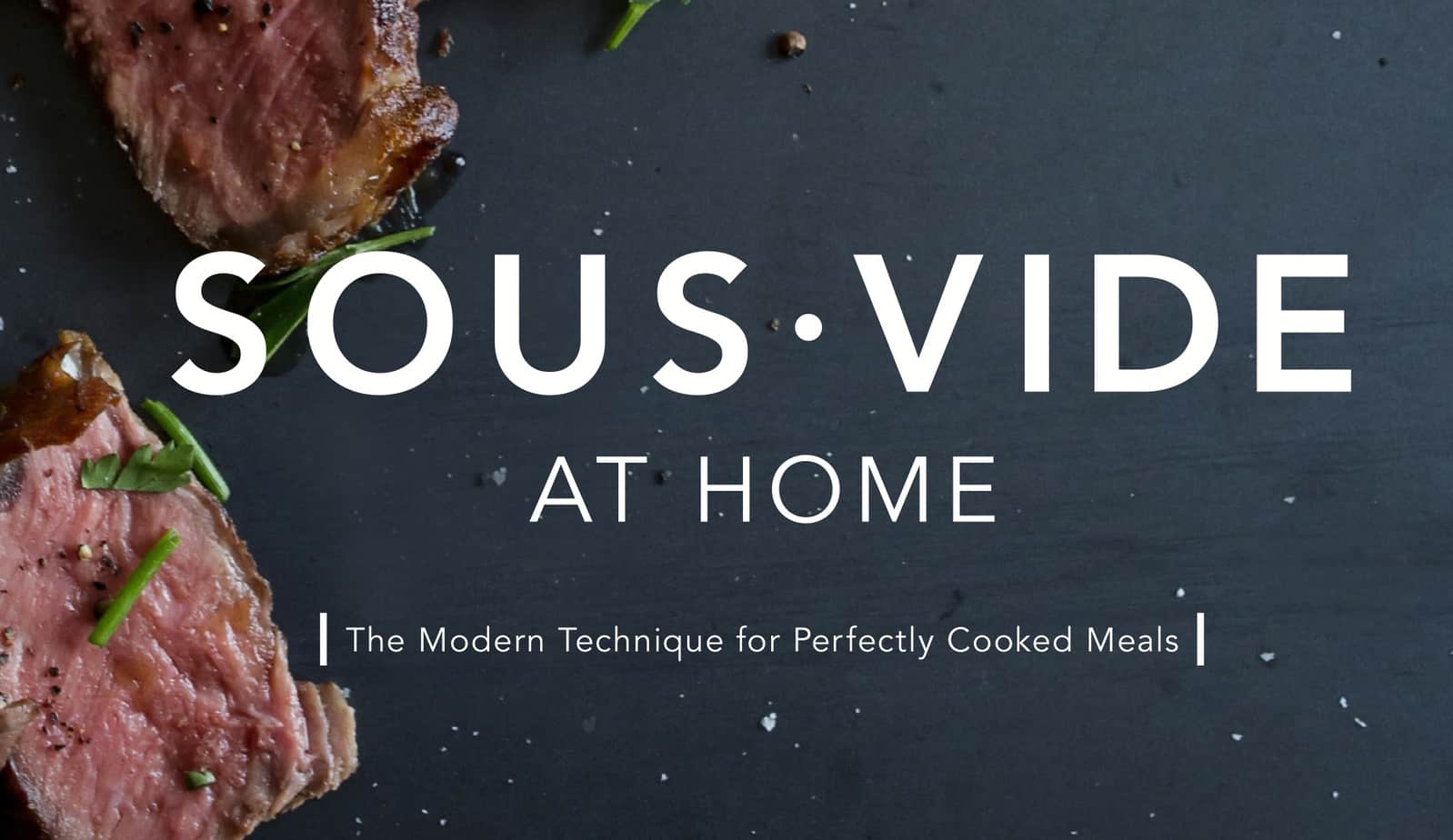
12
OctMake it Sous Vide!
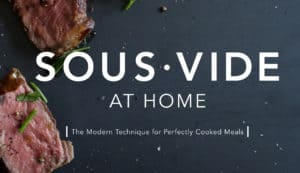 Believe it or not, I’m sometimes afraid of new technology. My ex-husband worked for one of Microsoft’s competitors in the late 1970s and 1980s and his company created one of the first word processing programs for the PC. Yet, in the early 1990s I still insisted on writing my graduate school papers on a word-processing typewriter. Because we had several computers in the house, my inability to embrace the PC drove him crazy – among a zillion other things, of course!
Believe it or not, I’m sometimes afraid of new technology. My ex-husband worked for one of Microsoft’s competitors in the late 1970s and 1980s and his company created one of the first word processing programs for the PC. Yet, in the early 1990s I still insisted on writing my graduate school papers on a word-processing typewriter. Because we had several computers in the house, my inability to embrace the PC drove him crazy – among a zillion other things, of course!
It’s not that I am distrustful of technology – I’ve actually been an early-adopter of many gadgets and devices – but I must fully understand them first. I hate reading boring instruction manuals and that often trips me up. I’m a hands-on learner and my confidence level often has wild rides of highs and lows when learning how to use a new appliance or gadget.
That said, once I am a firm-believer, I drive everyone a bit looney when I insist on singing, and re-singing, the praises of each of my new gadgets and appliances. Gerry and I bore our friends with wondrous tales of inventions like the steam cleaner, vacuum sealer, spiralizer, espresso maker and milk frother.
This is especially true in the kitchen where I spend much of my time on the weekends. In my early marriage years, I heartily adopted the Cuisinart food processor, the KitchenAid stand mixer, and the automatic bread and pasta machines. Sometimes these machines hum in the kitchen for weeks, and other times they lie silent for months or years. Still some are part of my everyday repertoire.
My eldest daughter is an amazing, adventurous cook. Mostly due to her driven spirit, but also because she is severely allergic to nuts and seeds, she makes everything from scratch, including roasting her own coffee beans. Due to her infectious enthusiasm (the acorn doesn’t fall far from the tree), I love to watch her use her newest equipment, sometimes adopting it into my own life.
That’s where the sous vide comes in.
Several years ago, she pronounced her love of her new sous vide on her Facebook page. I was, apparently, living in the dark ages because I had no idea what a sous vide was. I don’t usually watch any cooking shows (binge-watching the Great British Baking Show was an exception), so I researched this exotic tool myself. I asked her to bring her sous vide equipment to our home several years ago and we had the most amazing lamb rib chops that I’ve ever tasted at dinner that night.
Soon after I received my own sous vide stick from Gerry for my 65th birthday. (One of the things I love about my husband is his constant and hearty support of my whimsies and interests.)
Yet, that is where my fears sometimes bring my enthusiasm to a halt. It seemed to me that there were so many complications to cooking with the sous vide. I read several books and agonized over additional tools and equipment. It’s important to eliminate heat loss, and vacuum-sealed packets must not touch each other. I ordered numerous exotic accessories, and then promptly packed all of it in my appliance closet until my courage overcame my anxiety.
It was there that the sous vide sat – until this past weekend when my determination took hold and I decided to experiment in the way I learn best – hands-on and under pressure. I planned a dinner for neighbors and committed to an uncomplicated menu of center-cut beef shanks and butter-poached baby potatoes.
Sous-vide is a French term for “under vacuum.” Simply put, you cook food that is vacuum-sealed in a plastic pouch in a water bath for a long time at a perfect low temperature. With the sous vide technique, the food cooks evenly throughout. It doesn’t overcook or undercook, as long as you know what you are doing. The moisture in the food is retained.
Little did I know, but high-end restaurants use the sous vide method for meats and shellfish all the time. That is how they serve you a perfectly-cooked chop or scallop that is quickly seared and placed on your plate.
You can use fancy tools, or not so fancy. My Anova sous vide stick is a version that actually has a Bluetooth setting, which seems a bit extravagant and foolish. This sous vide immersion circulator is firmly attached to a plastic bin filled with water, the tool is turned on and brought up to a specific temperature, the vacuum-sealed food is placed into the bin, and the food is cooked for a specific time.
This weekend’s beef shanks were vacuum-sealed with a sprig of fresh thyme, slices of onion and garlic, and a sprinkle of freshly ground salt and pepper. They were then cooked in a constant 155 degree water bath for 20 hours. Yes, 20 hours. Some sous vide techniques call for 48 hours of cooking! The beef will be removed from the water bath several hours before dinner and quickly seared in a very hot grilling pan before serving. In the interim, the vacuum-sealed baby potatoes will poach with butter and parsley at 194 degrees for two hours.
If you’d like to learn about sous vide cooking, complete with amazing recipes, there are plenty in our Minuteman Library catalog and at our library here in Norwood. If you start with some of the best cookbooks, sous vide techniques and equipment are fully explained in the first chapters. The Essential Sous Vide Cookbook by Sarah James is a great book to start with because she has lots of practical guidance and advice, including techniques on preparing food for sous vide recipes. Sous Vide at Home by Lisa Fetterman even has techniques for cooking Thanksgiving dinner! Fetterman has another book, Sous Vide Made Simple (in 60 everyday recipes.) There are several eBooks instantly available on Hoopla: The Sous Vide Kitchen by Christina Wylie and Make it Sous Vide! by Meredith Lawrence.
Of course, this week’s column was due before dinner was fully cooked, but I have complete confidence in my sous vide technique. My daughter texted me a big high-five because she is delighted that I’ve finally overcome my anxiety. My husband is finally looking forward to another delicious dinner – this time, sous vide style.
Charlotte Canelli is the Director of the Morrill Memorial Library in Norwood, Massachusetts. Read Charlotte’s column in the October 11, 2018 edition of the Norwood Transcript and Bulletin.
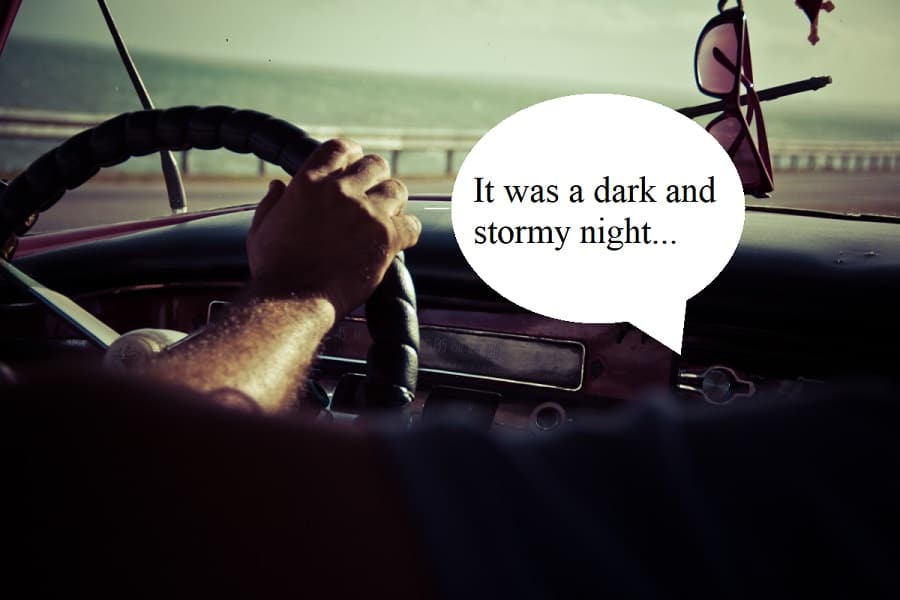
5
OctAudio Failure
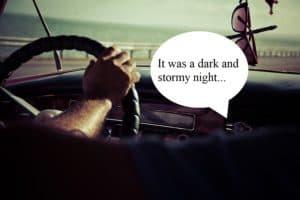 Though I have always loved stories, I never listened to audio books growing up. It wasn’t that I disliked them, it just never occurred to me to listen to them. My parents didn’t listen to them, and although I sort of knew that there was “talk radio” out there, I thought it was something on “AM” and that they only talked about news, sports or traffic. I suppose my grandparents had listened to “stories” on the radio, but it was not something anyone ever talked about that I can remember. The only real reference I had from that era was when my mother referred to my grandparents as ‘The Bickersons,” and I had to ask her what she meant.
Though I have always loved stories, I never listened to audio books growing up. It wasn’t that I disliked them, it just never occurred to me to listen to them. My parents didn’t listen to them, and although I sort of knew that there was “talk radio” out there, I thought it was something on “AM” and that they only talked about news, sports or traffic. I suppose my grandparents had listened to “stories” on the radio, but it was not something anyone ever talked about that I can remember. The only real reference I had from that era was when my mother referred to my grandparents as ‘The Bickersons,” and I had to ask her what she meant.
I loved reading books and watching television and movies. The first movie I ever saw in a theater, Snow White, was a revelation to me. I was only about three, and my parents were unsure if I was too young to bring to the theater, or if I would be scared by the witch. But I sat, wide-eyed, and absorbed every detail. When it ended, I burst into tears and was inconsolable. My parents apologized and told me the witch wasn’t real. But all I could get out was, “I…never…wanted it…to end!”
This is all to say it started young and fully formed, my love of stories. But I think I really associated stories with something visual – something I read or watched. I was never good at processing information by just listening. I have always been a terrible fidget, and the minute I am not engaged, my mind wanders. Pretty soon I am in a story in my head and not hearing whatever else is going on. For some reason, the act of reading and drawing or watching was enough, but hearing something was not.
Then I met and fell in love with my husband, a man who is a complete audiophile. And as you do when you love someone, I tried to learn about and appreciate the things he cared about. He could sit in a room or lie in bed and just listen to things for hours. I would fall asleep or lose interest in about ten minutes. Listening to music was easy. Audio books were much harder.
This was before podcasts and iPods, and having earbuds constantly in our ears was the norm. I started listening in the car. At least I could drive and not let my mind wander to the dishes I needed to do or that coat I wish I bought or where were those paints I bought four years ago? The road and a story. I could do that!
Except, at first, I couldn’t. I kept missing parts of the story. I would suddenly realize I had no idea what the reader was talking about. Man, how long had I spaced out?
I had to keep trying. It took a while, but gradually I learned a few things. First of all, some things were just not interesting in print or audio. I am never going to be interested in the business report! Likewise, a Chuck Palahniuk book I would have hated to read, I hated to hear! This may seem intuitive, but at first I was trying to make myself like audio books and failing, because I mainly hated the content. Second, the reader matters! The monotone of Malcolm Gladwell was not for me. But his ideas were interesting, and I was better suited to understand him if I read his book instead.
Fast forward about 15 years, and I am still a very visual person, and audio tends to work better for me if I am otherwise engaged. My husband can still listen to podcasts for hours, while I prefer to read.
Our son, on the other hand, is all-consuming when it comes to stories. At just five, he can’t get enough. He never tires of being read to, or watching shows and movies. And every meal break, car ride, walk, he asks the same question: “Can you tell me a story?” I am pretty good, but not ten stories a day good. He is insatiable. But I didn’t want to dampen his enthusiasm. I just needed a break. So I thought, I wonder if he could follow an audio book?
Life. Saver. For real.
Every car ride, five minutes, fifteen minutes, two hours – doesn’t matter, he wants that audio book. We started with the Magic Tree House books, which are great early chapter books. They are whimsical, but usually based on some historical or scientific facts: a journey to Egypt, escaping pirates, or exploring the tundra with Jack and Annie. At about two hours a book, they were the perfect introduction to listening to longer form stories. At first, I would pause the story every once in a while to make sure he knew what was going on, but he rarely needed help.
We are still listening to the Magic Tree House (there are a lot of them), but we recently jumped to Harry Potter. I was thrilled that he immediately fell in love with the story, and over a few weeks we finished the first book.
Audio has opened a new door to sharing stories and ideas with my son, and allowed me a new appreciation of the format. I can’t wait to hear the next story.
Nicole Guerra-Coon is the Assistant Children’s Librarian at the Morrill Memorial Library in Norwood, MA. Look for her column in the October 4, 2018 edition of the Norwood Transcript.
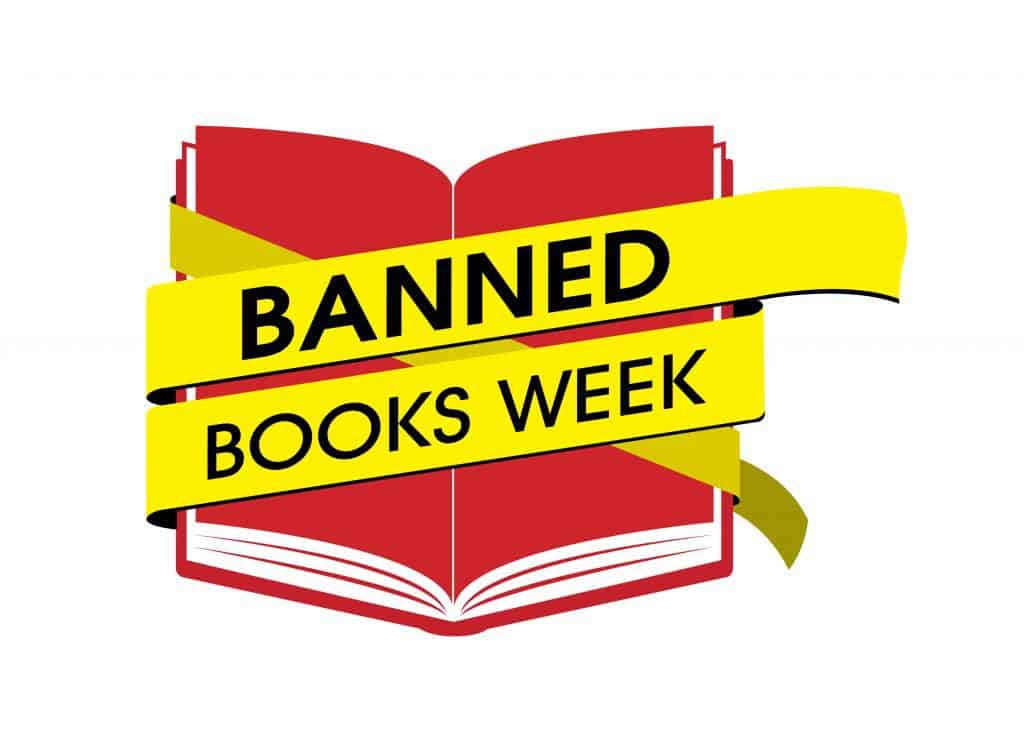
28
SepDon’t Read That!
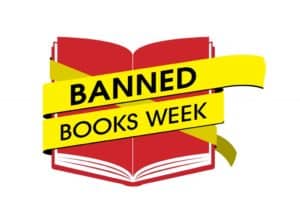 As Americans, we take a lot of our freedoms for granted. Other than yelling “Fire!” in a crowded theatre, we don’t even think twice about our right to say what we want when we want. We trust that law enforcement cannot enter our homes without a warrant, and we know that the freedom of religion is an ideal on which our country was founded.
As Americans, we take a lot of our freedoms for granted. Other than yelling “Fire!” in a crowded theatre, we don’t even think twice about our right to say what we want when we want. We trust that law enforcement cannot enter our homes without a warrant, and we know that the freedom of religion is an ideal on which our country was founded.
But imagine a reality in which we couldn’t read what we wanted. The freedom to write books of varying opinions and subject matter is protected by the First Amendment, under the freedom of speech. Have you considered that this extends to protect your freedom to read? Protecting everyone’s freedom to read what they want is a bedrock of librarianship, and it’s more of a constant concern than you might expect. There are frequent calls to censor books people don’t agree with or find objectionable in some way. If the move to censor a book is successful, it may be pulled from the shelves of schools, public libraries, and even booksellers.
A surge of book bans and challenges in the 1980s led to the banding together of people across the book trade to protect the freedom to read and draw attention to banned and challenged books, and thus Banned Book Week was born. Typically held the last week of September, Banned Book Week celebrates the most challenged books of the previous year, inspires advocacy around the need to protect our freedom to read, and highlights the value of free and open access to information. By focusing on efforts across the country to remove or restrict access to books, Banned Books Week underscores the harms of censorship.
Curious about the most challenged books of 2017? The American Library Association’s Office of Intellectual Freedom compiles lists of the most challenged books across the country. Last year, the Top Ten Most Challenged Books were (quoted directly from the bannedbooksweek.org website):
- Thirteen Reasons Why written by Jay Asher. Originally published in 2007, this New York Times bestseller has resurfaced as a controversial book after Netflix aired a TV series by the same name. This YA novel was challenged and banned in multiple school districts because it discusses suicide.
- The Absolutely True Diary of a Part-Time Indian written by Sherman Alexie. Consistently challenged since its publication in 2007 for acknowledging issues such as poverty, alcoholism, and sexuality, this National Book Award winner was challenged in school curriculums because of profanity and situations that were deemed sexually explicit.
- Drama written and illustrated by Raina Telgemeier. This Stonewall Honor Award-winning, 2012 graphic novel from an acclaimed cartoonist was challenged and banned in school libraries because it includes LGBT characters and was considered “confusing.”
- The Kite Runnerwritten by Khaled Hosseini. This critically acclaimed, multigenerational novel was challenged and banned because it includes sexual violence and was thought to “lead to terrorism” and “promote Islam.”
- Georgewritten by Alex Gino. Written for elementary-age children, this Lambda Literary Award winner was challenged and banned because it includes a transgender child.
- Sex is a Funny Wordwritten by Cory Silverberg and illustrated by Fiona Smyth. This 2015 informational children’s book written by a certified sex educator was challenged because it addresses sex education and is believed to lead children to “want to have sex or ask questions about sex.”
- To Kill a Mockingbirdwritten by Harper Lee. This Pulitzer Prize-winning novel, considered an American classic, was challenged and banned because of violence and its use of the N-word.
- The Hate U Givewritten by Angie Thomas. Despite winning multiple awards and being the most searched-for book on Goodreads during its debut year, this YA novel was challenged and banned in school libraries and curriculums because it was considered “pervasively vulgar” and because of drug use, profanity, and offensive language.
- And Tango Makes Threewritten by Peter Parnell and Justin Richardson and illustrated by Henry Cole. Returning after a brief hiatus from the Top Ten Most Challenged list, this ALA Notable Children’s Book, published in 2005, was challenged and labeled because it features a same-sex relationship.
- I Am Jazz written by Jessica Herthel and Jazz Jennings and illustrated by Shelagh McNicholas. This autobiographical picture book co-written by the 13-year-old protagonist was challenged because it addresses gender identity.
There’s an interesting and unintended consequence to banning books however. Prohibiting something gives it the allure of being taboo; telling people, especially teens, that they “can’t” do something only makes them want to do it more. Banning books can actually catapult them into popularity.
Everyone is entitled to their opinion, and choice of reading material is often a matter of taste. People who challenge books disagree with their content, opinions expressed, etc – and that’s fine. We’re never going to all agree on what constitutes offensive content, and what a boring world it would be if we only ever saw our own values reflected back to us. The problem doesn’t lie with differences of opinion, but instead with restricting others’ access to information and books they might want to read.
In a famous passage discussing Voltaire, historian Evelyn Beatrice Hall wrote, “I disapprove of what you say, but I will defend to the death your right to say it.” And librarians will continue to protect your right to read. Help us celebrate Banned Books Week 2018 this week, September 23-29. We have a display of banned books on the second floor – some of the titles might surprise you! – and we can help you find other titles you might be looking for.
Liz Reed is an Adult and Information Services Librarian at the Morrill Memorial Library in Norwood, Massachusetts. Read Liz’s column in the September 27, 2018 issue of the Norwood Transcript and Bulletin.
6
SepPodcast: Not the Same Old Radio Show
![]() Audio blogging, or podcasting, began in the 1980s. It wasn’t until the advent of broadband, mobile applications, and wide use of the Internet, though, that audiobloggers found a niche. Today there are 250,000 podcasts with one billion subscribers on iTunes. In 2004 the word podcast was invented – the word is a blend of the words iPod and broadcast. Podcast is both a noun and a verb. Defined, it is a digital audio file uploaded to the Internet.
Audio blogging, or podcasting, began in the 1980s. It wasn’t until the advent of broadband, mobile applications, and wide use of the Internet, though, that audiobloggers found a niche. Today there are 250,000 podcasts with one billion subscribers on iTunes. In 2004 the word podcast was invented – the word is a blend of the words iPod and broadcast. Podcast is both a noun and a verb. Defined, it is a digital audio file uploaded to the Internet.
I became a podcaster in 2006 after taking a class and uploading my first podcast to Podbean, a free podcast hosting site. My first podcast was a simply a one-episode thing and it was merely an assignment for a workshop I took through our regional library system. A few years later, I began reading and uploading audio versions of our library columns to another hosting service, SoundCloud. It became far too time-consuming and I abandoned the practice, leaving the digital files somewhere in the digital heavens.
So what’s this column about podcasts have to do with the library? While podcasts are free just like public libraries, you don’t need a library card to listen to them. You also don’t listen to them through any library apps. Podcasts aren’t available through our library catalog or digital subscriptions such as Hoopla and Flipster, and you don’t download them through Libby by OverDrive.
As a librarian, and as an enthusiastic podcast subscriber, I simply want you to know (if you don’t already) that a podcast is a beautiful thing. It’s free (mostly). Anyone can create one and upload one with very little equipment (depending on quality). And anyone can listen as long as they have a computer or device that is capable of listening to an audio file.
Podcasts are very much like the radio that some of us grew up with… or some of us didn’t. Beginning in the 1920s and through the 1930s and 1940s, my mother and father and grandparents gathered around the radio to listen to the news, plays, quiz shows and serial episodes. It was the heyday of the radio show. Commercially-sponsored shows, like the Voice of Firestone and Bell Telephone Hour, were weekly addictions. The C.E. Hooper Company measured the ratings of radio during this Golden Age and found that 82 out of 100 Americans listened to radio shows on a regular basis.
During my childhood, we only listened to the radio for the top 100, buying 78s and 45s to play on our record players. Our parents listened to Paul Harvey’s Rest of the Story and Golden Oldies before television took over in popularity through the 50s and 60s. In the 80s and 90s, however, many of us turned to public radio and were hooked on Prairie Home Companion (first aired in 1974 and now called Live from Here without association with Garrison Keillor), Car Talk (first aired in 1977), and This American Life (first aired in 1995). Most radio shows today can be subscribed to as podcasts – downloaded episodes to listen to at our leisure – or listened to in weekly radio broadcasts.
The main difference between a podcast and a radio show is that mainly radio is aired live, unlike podcasts which are recorded and are editable. Just like popular radio shows, successful podcasters have corporate sponsors or are part of the public radio family like National Public Media or local outlets. Some podcasters ask for donations on a website. One of my favorite podcasts asks for memberships, where members only can email questions or get first dibs on listening before the podcast is released.
I was subscribed to a few podcasts in 2014, and listened sporadically, but when the first season of Serial was released in October of that year, I became hooked. Serial was an offshoot of This American Life, a story that morphed into a 12-episode series and totally captured a host of fascinated listeners. The last episode aired in January 2015 when Serial had become a cultural phenomenon and now has been downloaded over one hundred and fifty million times.
Several years after Serial Season One ended, another amazing podcast, S-Town was released. There was no waiting for those of us who binge-listen because it hit the Internet in seven chapters, all at once on March 28, 2017 and within four days it was downloaded 10 million times. It was shocking, sad, poignant and addictive, and it ended far too soon.
As a regular podcast listener and subscriber, I listen to podcasts for education, entertainment and even relaxation. When having difficulty sleeping at night a few years ago, I often listened to Sleep with Me, a boring, monotonous hour-long podcast guaranteed to at least GET you to sleep. Host Scooter (Drew) Ackerman used late-night comedy radio to get to sleep every night. In 2013, he started podcasting “bedtime stories to help grown-ups fall asleep in the deep, dark night.” I can attest to the efficacy of Sleep with Me. However I find his voice maddening sometimes and have given up the habit of sleeping with Scooter Ackerman.
One of my favorite podcasts is Modern Love, produced in collaboration by NPR’s WBUR Boston and the New York Times and released every Thursday. (Host and journalist Meghna Chakrabarti is now also the host of NPR’s On Point, replacing host Tom Ashbrook.) Modern Love essays (from the column in the New York Times and written by professionals and amateurs) are read aloud by amazing actors like Jason Alexander or Sarah Oh. Everyone – writer, actor, Chakrabarti and Daniel Jones, NY Times editor, briefly discuss the essay’s impact and the podcasts typically last 15-20 minutes.
My latest podcast crush is Oligies (first taped in 2017) with actress Alie Ward. In her weekly podcast, Alie Ward discusses another “ology” with an expert in the field. Ferroequinology (study of trains), thanology (death and dying), selachimorphology (sharks) or malacology (snails and slugs are a few of her fascinating subjects. I am constantly amazed at how much I learn about things I never thought I had any interest in.
If you need help figuring out how to listen or subscribe to podcasts on your computers or devices using iTunes, Stitcher or other podcast aggregators, please call the library and make an appointment with one of the librarians who can help you.
Charlotte Canelli is the Director of the Morrill Memorial Library in Norwood, Massachusetts. Read Charlotte’s column in the September 6, 2018 edition of the Norwood Transcript and Bulletin.
